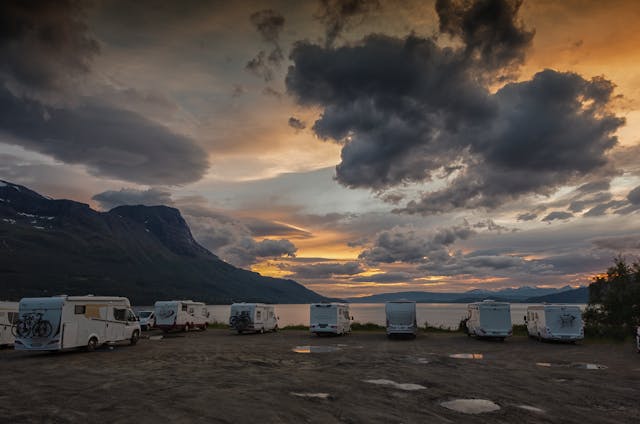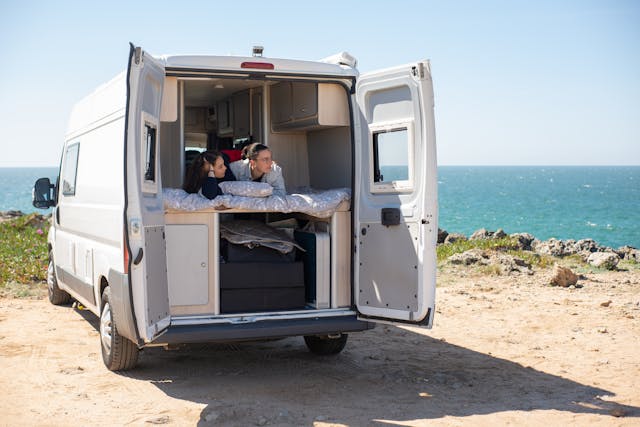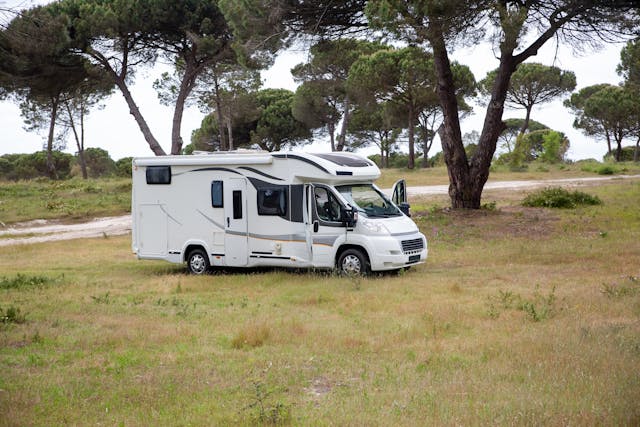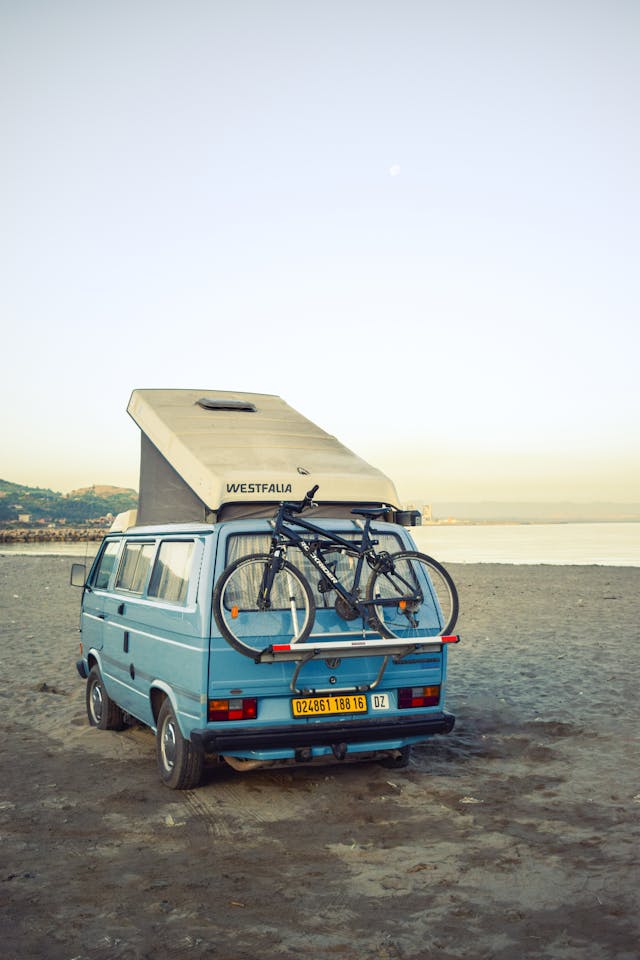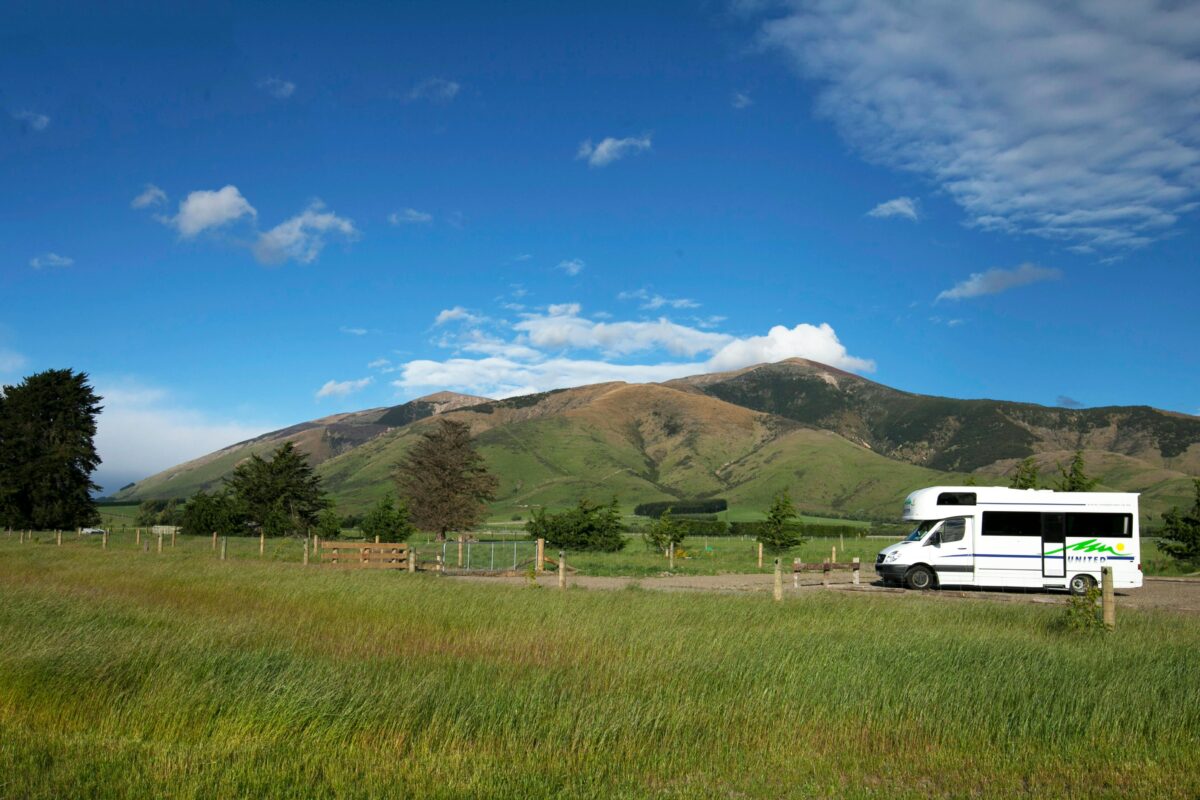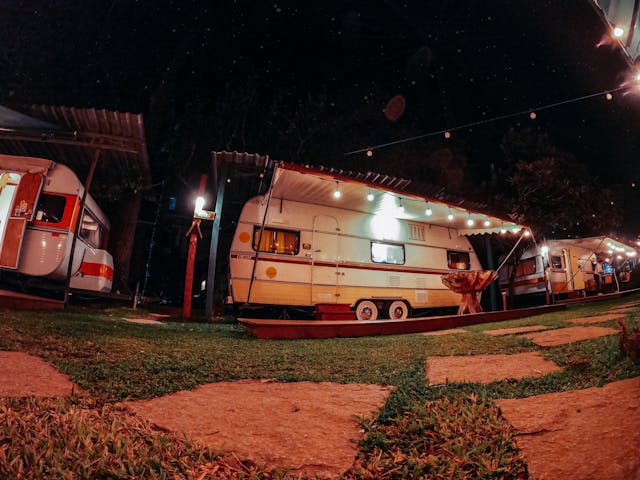Ensuring the safety of RV tires isn’t left to chance. Have you recently shown your RV tires the attention they deserve? Let’s kick off with this vital guide on selecting and maintaining tires for trailers and motorhomes.
While these substantial rubber giants may surpass standard car tires in size, they’re equally prone to common issues. From underinflation to overinflation, low pressure, punctures, and external damage, motorhome and trailer tires face similar challenges.
Your Must-Have Handbook for RV Tire Safety
Replacing your RV’s tires can be a cumbersome task due to their considerable size, but it’s a responsibility that comes with being an RV owner. As this task typically involves elevating your RV on jacks, prioritizing your safety is paramount.
In this guide, I’ll detail the safe process of replacing your RV tires. Additionally, I’ll cover various aspects of tire safety, including tire inflation, maintaining proper tire pressure, preventing blowouts, and storing tires during the offseason.
Deciphering RV Tire Markings
When you inspect your RV’s tires, you’ll notice a series of alphanumeric characters adorning them. These characters may differ among the tires on your vehicle. But what do they signify? Is it worth understanding them or can they be disregarded?
Ignoring them is not advisable. These characters hold valuable insights into your tires. Let’s decode them now:
- B: Denotes belted bias construction, alongside D and R, which represent other tire casing construction types.
- DOT: The DOT number, an abbreviation for the U.S Department of Transportation serial number, typically comprises three or four digits. For tires manufactured post-2000, it’s four digits, indicating the specific week and year of production.
- H: Part of the maximum speed rating classification. Speed ratings range from A to G, with H onwards being the most common. For H-rated tires, the maximum speed is 130 miles per hour (MPH).
- P: Found on passenger tires, denoting PMetric rather than “passenger tire.”
- Q: Signifies a maximum speed rating of 100 MPH.
- S: Signifies a maximum speed rating of 112 MPH.
- T: Signifies a maximum speed rating of 118 MPH.
- U: Signifies a maximum speed rating of 124 MPH.
- V: Signifies a maximum speed rating of 149 MPH.
- W: Signifies a maximum speed rating of 168 MPH.
- Y: Signifies a maximum speed rating of 186 MPH.
- Z: Signifies a maximum speed rating of 187 MPH and higher.
Understanding 10-Ply RV Tires
Every RV tire comes with a specification known as a load range or ply rating, which for simplicity’s sake, we’ll refer to as the ply rating throughout this article.
So, what exactly is the ply rating? It indicates the limits on tire inflation concerning the maximum load of the vehicle. If the load surpasses the ply rating, the tires could potentially fail or burst.
Additionally, each RV tire has its own ply count. However, this ply count doesn’t directly influence the ply rating. This concept might seem a bit perplexing, but let’s delve deeper into it.
The Evolution of Tire Construction
In the past, tires were predominantly crafted from layers of cotton rather than rubber. During that era, the ply rating served as an indicator of tire strength, accounting for the total plies within the tire. However, times have changed, and this is no longer the case.
Today, the ply rating primarily correlates with the tire’s load capacity, as mentioned earlier. Moreover, modern tires are no longer composed of cotton. Just imagine if they were!
Despite advancements, remnants of old terminology persist. For example, considering what we now know about ply ratings, it might seem logical to assume that a 10-ply tire contains 10 plies. However, this isn’t always accurate.
Even though the most robust tires bear a 10-ply rating, they often comprise only a maximum of three plies, with the standard being two. Some tires may even have just one ply.
While opting for 10-ply tires is advisable due to their superior strength, ability to handle substantial loads, and capacity to withstand high pressures, it’s essential to understand that these tires do not necessarily contain 10 plies. This discrepancy reflects lingering terminology from the past, which doesn’t diminish the quality or durability of the tires but may mislead in terms of accuracy.
Inflating Your RV Tires: Exploring Your Options
When it comes to inflating your RV tires, you have two primary choices: the traditional air compressor or a nitrogen system. Let’s delve into both methods to understand them better.
Air Compressor Inflation: The Convenient Choice
Opting for an air compressor for tire inflation stands as the simplest and quickest solution, primarily because your vehicle likely already houses one. This eliminates the need to purchase a separate air compressor unless your current one malfunctions. How convenient!
However, convenience doesn’t always equate to the best option. While using an air compressor for tire inflation is feasible, it’s not without its drawbacks. The engine must remain running throughout the inflation process, which can take a considerable amount of time. Additionally, the emission of exhaust and the accompanying noise can be off-putting.
Furthermore, relying on air compressors may not always yield accurate tire pressure readings, as they can induce pressure fluctuations.
Nitrogen System Inflation: A Preferred Choice
For many RV owners, the allure of portable air inflation systems, such as nitrogen systems, is undeniable. These systems offer a range of sizes to suit various needs:
- The 88p compressor, capable of reaching 120 pounds per square inch (PSI) on 33-inch tires.
- The 300P compressor, designed to achieve pressures ranging from 90 to 150 PSI on tires measuring 34 inches and larger.
- For even greater capacity, there’s the option of a 400P nitrogen compressor.
Nitrogen compressors boast several advantages, including ease of use, quiet operation, and significantly reduced emissions compared to traditional air compressors.
Is It Safe to Use Nitrogen-Filled RV Tires?
If you’re concerned about nitrogen-filled RV tires, it’s likely because you’re thinking of nitrogen more as a chemical. After all, when in liquid form, nitrogen is a popular ingredient for vehicular coolant. In its gas form, though, nitrogen is a naturally-occurring substance. It has no smell or color.
You’ll find nitrogen in air. In fact, according to Popular Mechanics, air includes portions of argon and neon (noble gases), larger portions of carbon dioxide and water vapor, little oxygen (roughly 21 percent), and mostly nitrogen (78 percent).
Nitrogen System Inflation: A Preferred Choice
For many RV owners, the allure of portable air inflation systems, such as nitrogen systems, is undeniable. These systems offer a range of sizes to suit various needs:
- The 88p compressor, capable of reaching 120 pounds per square inch (PSI) on 33-inch tires.
- The 300P compressor, designed to achieve pressures ranging from 90 to 150 PSI on tires measuring 34 inches and larger.
- For even greater capacity, there’s the option of a 400P nitrogen compressor.
Nitrogen compressors boast several advantages, including ease of use, quiet operation, and significantly reduced emissions compared to traditional air compressors.
Testing RV Tire Pressure: A Step-by-Step Guide
Before proceeding, refer to your owner’s manual for guidance. This invaluable resource typically contains recommendations for maximum inflation pressure. If you’re unable to locate this information, consult your RV’s certification label. Alternatively, reach out to your RV manufacturer directly for clarification.
It’s essential to note that each tire may have a different maximum pressure, determined by its load capacity. Consequently, it’s crucial to rely on the information provided in your owner’s manual rather than making assumptions about the correct pressure.
Avoid Exceeding Manufacturer’s Recommended Inflation Pressure
It’s imperative not to exceed the maximum inflation pressure specified by your manufacturer. Overinflating the tires can lead to a host of problems. An overinflated tire is prone to accelerated wear compared to others. Moreover, excessive pressure on the tread and sidewall reduces traction. In the worst-case scenario, overinflation can result in tire explosion.
Avoiding Low Tire Pressure: Importance and Procedure
Maintaining proper tire pressure is crucial, whether it’s intentional or accidental. Low tire pressure can lead to various issues, including tread separation, wear and tear, and the risk of tire explosion. This is primarily due to increased friction when underinflated tires rub against driving surfaces.
To check tire pressure accurately, a basic air gauge is all you need. For the most accurate reading, ensure your tires have been inactive and cooled down to their ambient temperature. If you’ve driven more than a mile in your RV, allow the tires to cool before conducting the pressure check. Otherwise, the heat from warm tires can elevate the PSI reading, resulting in an inaccurate measurement by 10 to 15 PSI.
While it’s possible to adjust for warm tire conditions by subtracting 10 or 15 PSI from the reading, this method is not entirely accurate. It’s best to wait for the tires to cool down before checking the pressure.
It’s advisable to test your RV tire pressure monthly and begin each day on the road with a pressure check. Additionally, before and after the offseason, it’s essential to retest the tire pressure to ensure optimal safety and performance.
Step-by-Step Guide: Changing RV Tires
Eventually, your current RV tires will reach the end of their lifespan due to wear and tear or misuse. If it’s the former, you may need new tires every four or five years.
RV Tire Change Tools:
- Wrench
- RV tire(s)
- RV jacks (two)
Procedure:
- Park your RV in an open area where you have full access to all sides of the vehicle.
- Engage the emergency brake.
- Position the first jack against the front wheel, ensuring it’s securely against the RV’s frame.
- Repeat the process for one back tire.
- Lift the rear tire off the ground using the jack, ensuring it presses against the RV’s frame.
- Proceed to lift the front tire, pumping it up three times beyond the rear tire’s height.
- Repeat the pumping process for the back tire, lifting it up three pumps.
- Continue pumping both tires until they’re raised sufficiently. If you can rotate the tires without them touching the ground, they’re high enough.
- Starting with the first tire, use the wrench to remove the lug nuts. Keep the lug nuts; you’ll need them later.
- Replace the old tire with the new one, securing it in place with the old tire’s lug nuts using the wrench.
- Repeat the process for the remaining tires as needed.
Carefully follow these steps when replacing your tires, exercising caution throughout the process.
Preventing RV Tire Blowouts
Two major causes of RV tire blowouts are underinflation and overinflation, as discussed earlier. Regularly checking your tire pressure when the tires are cold ensures optimal pressure before every journey.
However, maintaining healthy tires on the road involves more than just monitoring inflation. If your tires are aging and haven’t been inspected recently, there’s a risk of potential issues. It’s advisable to have your tires inspected every 90 days to ensure they’re fit for both short-term and long-term driving.
Considerations for RV Tire Health
The weight placed on your tires plays a significant role in their well-being. Overloading your RV can exceed the tires’ capacity, leading to potential collapse or blowouts. Additionally, improper weight distribution can put excessive strain on specific tires, increasing the risk of failure.
Furthermore, worn or old tire treads are a red flag for imminent blowouts. To assess tire tread wear, you can perform a simple coin test. Insert a quarter or penny into the tire grooves; ideally, the coin should stand upright. If it doesn’t, it indicates that the treads are too worn down, necessitating replacement before further driving.
Top Tips for Winter RV Tire Storage
During the winterization process, it’s advisable to remove your RV tires and store them properly for the offseason.
However, you can’t store them just anywhere. Opt for an indoor environment devoid of air currents and direct sunlight. Ensure the space is dry, cool, and clean, free from grease, oil, or moisture.
While most tires can endure exposure to water, ozone, and sunlight, prolonged exposure can degrade the rubber and shorten their lifespan. Storing your tires in an indoor area as described above helps prolong their durability and lifespan.
Maintaining Optimal Tire Condition
To ensure your tires remain in top condition, consider the following tips:
- Keep snow, sand, and reflective surfaces away from your tires to prevent accelerated wear.
- Avoid exposing your tires to heat-absorbent surfaces like asphalt, as they can cause damage.
- Ensure the storage space for your tires is free from ozone generators, such as electric motors, which can degrade rubber.
- In warmer winter climates, maintain a tire pressure reading of 15 PSI to account for potential pressure loss during colder weather.
- If possible, remove the rims from the tires. Otherwise, check the tire pressure and adjust it to 10 PSI.
- Store each tire in a polyethylene bag to protect against ozone and oxygen damage. Ensure the bags are not entirely translucent.
- When stacking multiple tires, place them evenly on top of each other to prevent uneven pressure distribution.
Conclusion: Prioritizing RV Tire Safety
In all RV maintenance endeavors, safety should always take precedence. Utilizing nitrogen instead of oxygen for tire inflation, conducting frequent tire pressure tests, and understanding the factors that can lead to tire blowouts are essential steps in preventing sudden tire failures.
When the time comes to change your tires, employing jacks to raise your RV to the appropriate height is relatively straightforward, but caution must always be exercised to avoid injury.
Lastly, storing your tires correctly ensures their reliability when spring arrives.
Wishing you safe travels and smooth journeys ahead!

